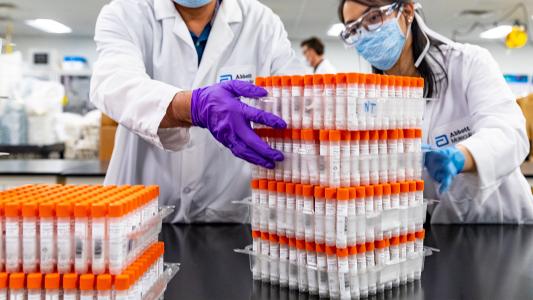With the number of COVID-19 cases surging, hospitals across the United States are all reporting the same problem: there will not be enough ventilators for coronavirus patients.
These machines, which move air into and out of the lungs, are vital to keeping people with severe coronavirus infections alive — and thanks to one Silicon Valley company, California hospitals may soon have hundreds more of the much-needed devices.
Refurbishing Ventilators for Coronavirus Patients
San Jose-based Bloom Energy’s focus is on green energy products — specifically fuel cells.
However, that focus shifted earlier in March, when CEO K. R. Sridhar received a call from California Governor Gavin Newsom asking for help.
“As long as we have supply coming in, we are continuing to refurbish and ship out as fast as we can.”
Susan Brennan
During a March 21 press conference, Newsom said he told Sridhar that the state had hundreds of old ventilators in storage that needed to be refurbished before they could be used on coronavirus patients — and that the manufacturer claimed it would need a month to refurbish just 200 of them.
“We challenge you to do more and do better,” Newsom said he told Sridhar.
Bloom accepted the challenge and quickly prepared for the arrival of the old machines.
“An engineer who works out here in California downloaded the manual for the ventilator that we would be refurbishing and taught himself how to build and repair ventilators overnight,” Bloom COO Susan Brennan told Fast Company. “So when he came into work Thursday morning, he had a process flow and process sheets ready to go.”
Bloom received a shipment of 24 ventilators on March 20. In just five hours, it had refurbished one, replacing parts, checking sensors, and completing other tasks as needed.
By the next day, it had refurbished them all — and that was just the start. Bloom has since refurbished and shipped 350 ventilators for coronavirus patients back to the state.
Bloom Energy to the Rescue (Again)
California hasn’t only looked to its own storage for ventilators for coronavirus patients — it’s also asked the federal government for more of the machines.
According to Newsom, the government has yet to respond to that request, but it did send Los Angeles County 170 ventilators directly from the national stockpile.
There was just one problem: the ventilators didn’t work. So Bloom came to California’s rescue again.
“(W)e had those 170 brought here to this facility at 8 a.m. this morning,” Newsom told reporters from a Bloom refurbishing site on March 28, “and they are quite literally working on those ventilators right now.”
By March 30, Bloom had repaired all 170 of the ventilators and returned them to Los Angeles County — but it’s far from finished helping fight the shortage of ventilators for coronavirus patients.
It’s still looking for more ventilators to refurbish in California, and its manufacturing facility in Delaware is already refurbishing ventilators for that state.
“As long as we have supply coming in, we are continuing to refurbish and ship out as fast as we can,” Brennan said.
